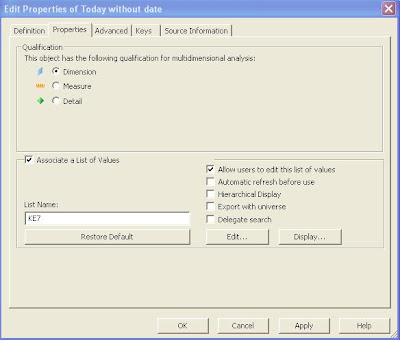What are CUID?
CUID- Cluster Unique Identifier
The CUID is a key to identify the Universe or report within the same cluster, may be in different deployment environment(e.g. development, staging and production). It is a 24 bit key which automatically generated when first export to repository is done. It is the single identification of the reports or the Universe which do the all handshake for the movement of the data through all BO servers ( Job server, Cache server, processing server).
Now what is cluster in sense of BO?
According to the Admin guide A cluster consists of two or more CMS servers working together against a common CMS system database. If a machine that is running one CMS fails, a machine with another CMS will continue to service BusinessObjects Enterprise requests. This "high availability" support helps to ensure that BusinessObjects Enterprise users can still access information when there is an equipment failure.
As an Example there are three environment in a BO implementation Development , Staging and Production. They have their own CMS server. But to work effectively it bundles into same cluster and controlled by one of the three CMS among them or Create another CMS to to control the cluster.
Where we can find this?
You can find this by opening the Universe or Report properties in CMC.
What is actually affected if CUID is changed?
All the reports are connected to the Universe by the CUID. If the CUID got changed all the reports will throw “Universe Not Found” error.
We need to re-point the report to the new universe.
In What situation it got changed?
I have not all the scenario but I found the below scenario:
- Import a universe.
- Save it in different file name.
- Export it in same path
~~~~~~~~~~~~~~~~~~~~~~~~~~~~~~~~~~~~
- Import a universe.
- Save it in same file name.
- Change the Universe name from properties
- Export it in same path
~~~~~~~~~~~~~~~~~~~~~~~~~~~~~~~~~~~~
- Import and save a universe.
- Export it in different path
~~~~~~~~~~~~~~~~~~~~~~~~~~~~~~~~~~~~
- Import and save a universe.
- Change the connection
- Export it in same path
~~~~~~~~~~~~~~~~~~~~~~~~~~~~~~~~~~~~
- Import and save a universe.
- Change the connection
- Export it in same path
If mistakenly it got changed then what is the recovery method without changing all the report?
1. Open the backup copy of the universe
2. Name it the same as the original (the one all the reports point to)
3. Export the universe to the same folder the original resides in
4. You will be asked if you want to copy/move the universe to the new location, select Copy
5. You will be told that a universe with that name already exists, do you want to overwrite it, select Yes
Some other points
1. CUID never gets changed when importing from one CMS to other using LCM or Import Wizard.
2. CUID is unique but ID which comes along with may be multiple for a single universe. ID is not used except auditing.



